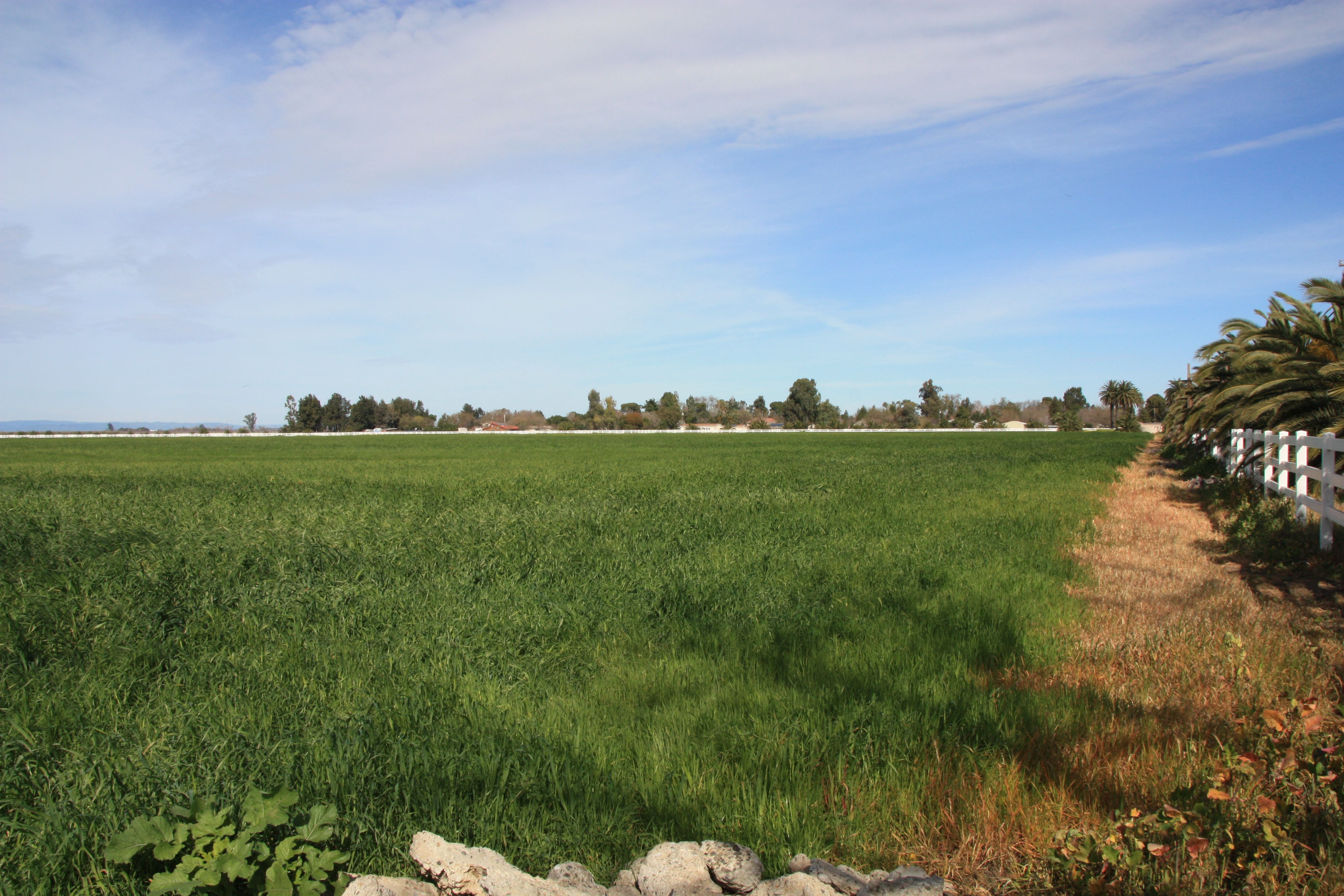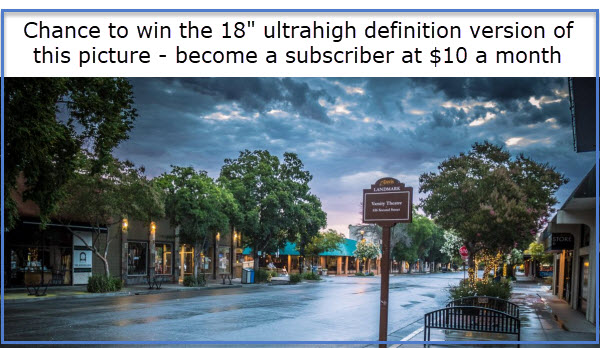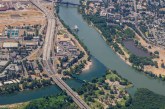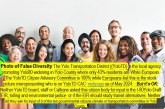 When the city looked to develop economically, they chose to look toward a variety of high-tech, university spinoffs that could leverage the economic power of the university. Recent discussions, however, have been misinformed about the nature of this effort.
When the city looked to develop economically, they chose to look toward a variety of high-tech, university spinoffs that could leverage the economic power of the university. Recent discussions, however, have been misinformed about the nature of this effort.
The biggest barrier that the city has had has been twofold: (1) land use policies, and (2) available commercial space. Back in 2010, Studio 30 analyzed the city’s available land for commercial development and they came to the conclusion: “The current isolated and dispersed sites that are available and appropriately zoned are not adequate in terms of size, location, or configuration (and related constraints) to address the emerging market need of an Innovation Center.”
Instead, what they recommended was that “the City pursue a broad strategy to attract innovative businesses that offers a number of sites that are scalable and range in size so the community can accommodate an incubator, startups and expanding businesses.”
The report concluded that “Davis needs at least 200 acres for business development and expansion over a 20 +/- year time horizon.”
To get there, they recommended that the city work on existing sites, develop a “close in” hub or incubator with one “larger, less constrained… edge site.”
Coming out of this, the city put out RFEIs (Requests for Expressions of Interest) in 2014 to get a proposal for a large, 200-acre innovation center. Based on this request, two applications came forward – the Davis Innovation Center  near the hospital and the Mace Ranch Innovation Center.
near the hospital and the Mace Ranch Innovation Center.
Does the fact that we’ve lost this opportunity show that there is not much market demand for existing commercial space? I would argue that the picture is quite a bit more complicated than that.
The first complication is that of Measure R. Nishi came forward as a mixed-use project with 300,000 square feet of R&D space in 2016. It is quite possible that had that project simply come forward with a better affordable housing proposal on-site, this would have been sufficient to overcome the opposition. As it was, it was defeated by about 700 votes.
The developers then put forward a proposal which, based on the results from 2016, they believed would be easily approved, and they were proven correct as it passed by a 60-40 vote.
Is this proof that there isn’t demand for innovation centers? I don’t think so. As I have pointed out, arising in the wake of that proposal was Area 52 for Sierra Energy – Sierra Energy had contracted with Nishi to develop their R&D site. Also Fulcrum Property made a huge purchase of what is now known as University Research Park. They invested over $70 million in the initial purchase and, by the time they are done, there will be mixed-use workforce housing and densification to over half a million of commercial development on that site.
So while it is true that Nishi was defeated at the polls and approved as housing, the fact is that is a Measure R deal and more commercial development has actually resulted out of that.
As for the Davis Innovation Center, the developers received pushback from their neighbors to the north, they felt constrained by a lack of housing options, and so they folded shop in Davis, moved north to Woodland, and got what they wanted approved there.
Again, that’s not evidence that there is a lack of market demand for existing commercial space, it’s evidence that Measure R is a considerable barrier to commercial development in Davis.
The second point is that housing does matter. In 2013, it was safe to say that the city was of the belief that housing attached to economic development would kill the projects when they came to the voters. There was reason for the city to believe that. But as it turns out, not having housing proved fatal to the projects and the voters have shown a willingness to support housing in
 recent elections.
recent elections.
There are several things going on – one is that lack of housing is basically superheating the housing market.
But the second point is the one made by the folks pushing for mixed use at the University Research Park.
One of the big barriers to economic development is in fact lack of housing. URP Project Manager Dave Nystrom explained that “one of the challenges (businesses in the park) face is hiring people because it’s so difficult to find housing in Davis. People I think have an expectation that if they’re going to work in Davis, they’re going to live in Dixon or Woodland or West Sacramento because the housing market is just so tight.”
So the first major investment after the initial purchase by Fulcrum, therefore, is to provide housing for existing employees, before they invest in expansion of the commercial space in the park in the park its.
Third, we are seeing commercial investment in Davis. We have already cited the investments by Fulcrum (URP) and Sierra Energy (Area 52). We have also seen two new hotels that have been approved and are being built. We also have seen five new cannabis dispensaries with four approved mobile delivery businesses.
All of that figures to add to the city’s finances down the line.
But the big one has proven illusive, and I would argue not because of lack of commercial interest, but rather from barriers to entry.
We have seen innovation centers springing up in Woodland and West Sacramento. It is notable that both of those efforts started in Davis and moved elsewhere due to lack of space and lack of progress.
The biggest loss is the innovation efforts of UC Davis and the City of Sacramento and a new Innovation Hub known as Aggie Square. Using the Tech Square in Atlanta as its model, the government, industry and academia are collaborating in order to transform the Sacramento region into a center for high-tech research.
Whereas we are already seeing, even in the limited landscape in Davis, over $100 million invested in economic development from the private sector, and what is going on in Sacramento is dwarfing that.
Despite some missteps in this process and some lost opportunities, the city is actually still in pretty good position to take advantage of the next wave of high-tech economic development. The investment by Sacramento and UC Davis will actually make this more and not less likely.
The key is the need to leverage university innovation research into private sector economic development. The fact that companies like Fulcrum and Sierra Energy are still willing to invest in Davis suggests that the situation is still ripe for Davis to take advantage.
But in my view what is needed is a clear vision, some direction, and the city to open up some land use opportunities for the private sector to want to risk tens of millions on Davis in the future.
—David M. Greenwald reporting







University Research Park is one example of a conversion of existing commercial space, to accommodate semi-residential usage. Other examples include the following (already done, or expected):
Trackside
University Mall
Downtown
Del Rio
Of course, sometimes the city simply eliminates commercial/industrial zoning altogether (to accommodate residential development), as with the following properties (already done, or expected):
Sterling
3820 Chiles Road
Plaza 2555
Davis Health Care
Several of the parcels discussed in the two categories above were multi-acre, in size. (Not sure what the zoning was at Lincoln 40.)
And then, there’s the innovation centers that were “pulled” by their respective development teams. Ironically, with several converted entirely to housing (which is supposedly more difficult to obtain approval for, under Measure R). These include the following:
MRIC
Nishi
Davis Innovation Center
And then, there’s the Cannery, in which the owner reportedly wouldn’t even consider a commercial development.
I’m reasonably sure that the list above is not complete, and that some other properties that were also converted from commercial usage to residential, or semi-residential uses.
U-Mall will have same/more Comm space… just adding residential
Trackside, to a lesser extent.
URP… Comm will be about the same Comm as existing… just adding res.
Conversion from Comm to Res is just another falsehood.
Missed opportunities to ‘densify’ commercial, maybe.
Nishi is vacant, except for a homeless encampment… the zoning for Comm was defeated by the 2016 vote. No “real” loss… except maybe for ‘potential’… still subject to a Measure J/R vote… probably would not be annexed to the City, unless main access was via Richards/Olive, which I oppose.
So many untruths, so little time/inclination…
“URP… Comm will be about the same Comm as existing… just adding res.”
Actually URP in that spot is an open field. They add commercial on the ground floor and add housing above. Did Ron read the quote from Dave Nystrom and Jim Gray? The lack of housing available for employees is a barrier to economic development.
“Missed opportunities to ‘densify’ commercial, maybe.”
My understanding is that URP is going to densify commercial, but they needed to deal with the housing issue first.
I don’t really understand your point overall.
David: There have been plenty of opportunities for businesses to occupy one, or more of the multi-acre sites that have been converted to housing. And yet, they failed to do so (with the exception of the few who are attempting to include housing, on commercial sites).
I’m not aware of any single business that would likely need or occupy an entire 200-acre site. And yet, businesses are not taking advantage of the opportunities that already exist (or existed, before being approved for housing).
Ironically, two of those previously-proposed innovation center sites were approved by a Measure R vote – for housing only (which is “supposedly” more difficult to obtain approval for, compared to commercial developments).
“There have been plenty of opportunities for businesses to occupy one, or more of the multi-acre sites that have been converted to housing. And yet, those sites were converted to housing, or for semi-residential uses.”
Why is it that you think this is meaningful? I have shown you multiple examples of high level economic development (you’re still conflating business with economic development which is making this a much more difficult conversation than it needs to be)
“I’m not aware of any single business that would likely need or occupy an entire 200-acre site.”
THat demonstrates a fundamental lack of understanding of the purpose of an innovation center.
“Ironically, two of those proposed innovation center sites were approved by a Measure R vote, for housing only (which is “supposedly” more difficult to obtain approval for, compared to commercial developments).”
Nishi was never an innovation center. Ironically you voted against Nishi with a 300,000 square foot R&D site. And as I’ve pointed out, Area 52 and URP have taken the place of that 300,000 sf.
Davis Innovation Center as I point out in the article, moved to Woodland without Measure R requirements and where they were able to do it as a mixed-use project rather than commercial only with a vote. That was an avoidable loss.
Because it demonstrates lack of demand, unless it includes the “real” prize for developers (housing). Several of those multi-acres commercial sites were available for years, before being converted to residential.
Perhaps you should explain this. I’m not aware of economic development that doesn’t include business.
Which is, a single business occupying a 200-acre site? If not, then why weren’t these businesses interested in one of the other multi-acre sites that became available?
Great! So, there’s no further need. (Except for a 200-acre site, according to that logic.)
You’ve previously pointed out that the “world-class” development team behind that proposal simply withdrew, and did not pursue a Woodland location. Regardless, if this development is ever actually built, it will provide competition (and will have a leg-up), on anything proposed in Davis. Same with the other sites (which include Dixon, I believe). By the way, how are all of these other proposals going? (Other than the one in Sacramento, which is being directly subsidized by UCD and public agencies, but also hasn’t been built yet.)
Again, the “theory” has been that Measure R prevents housing developments. In fact, it does not, and yet the innovation centers have nevertheless folded (with two of the sites converted to housing). Presumably, an innovation center should be more “appealing” to voters, than the housing developments that have been approved via a Measure R vote. (Both of which are on sites previously proposed for innovation centers.)
If innovation centers were truly the fiscal saviors that you believe, they would have been built all over the place, by now. And yet, not a single one exists at this point in time, within perhaps a 100-mile radius of Davis.
There are several points I’m going to raise which not addressing every single point here.
The first is that you have argued without real evidence that there is a lack of demand for commercial properties. I think that’s false.
This is extremely complicated and I’m no expert. But we are not talking about retail here. We are talking about developing high tech, startups and also bringing in more mature companies like a Mori Seiki or HM Clause which have well paying jobs and generate revenue for the city.
Is there demand for commercial? We’ve added some big items in the last year – two hotels, at least nine cannabis related businesses, we’ve seen the purchase of URP, we’ve seen the investment of Area 52. That’s all big stuff.
The estimated build out of the 200 acre MRIC site was 30 to 50 years. This isn’t a quick development and a quick buck. Housing you can probably expect a return within five years. With an innovation park, it’s a long process. It’s not that housing is the real purpose for these parks, but there is a real reluctance for businesses to come here when their employees will not have a place to live in town and have to commute. That’s hurting the business end.
“Which is, a single business occupying a 200-acre site? If not, then why weren’t these businesses interested in one of the other multi-acre sites that became available?”
“If innovation centers were truly the fiscal saviors that you believe, they would have been built all over the place, by now.”
They are. But they have to be connected to something. Look at what the Research Triangle has done, Mission Bay, Atlanta’s and now what is coming to Sacramento.
Bottom line is, Davis is not going to survive bringing in some retail. On other hand, high tech, transfer, capitalizing on the proximity to UC Davis is our competitive advantage and we can do this stuff without fundamentally changing the nature of this community.
Alright, I’m out for the day.
For one thing, that’s not how it works. Look at the process by which it took Amazon to find its two new headquarters. That’s the process we went through to get Mori Seiki. This is different than the way you are thinking. In order to get these kinds of companies that bring many jobs and money, we have to have sites that are shovel ready. We don’t have a lot left.
https://www.dailydemocrat.com/2018/07/13/research-amp-technology-park-could-begin-2020-construction/
This may very well be what some developers “tell” you, but it’s more likely that there’s simply more money in residential development. No one is going to turn down a good job because they might live a few miles away. Take a look at the freeways (anywhere), if you doubt that. And in fact, many would commute to an innovation center regardless of where it’s located, or whether or not it includes housing. Some residents of an innovation center may commute elsewhere.
I’m not sure why you’re bringing up retail development, as it wasn’t the topic.
I personally find it sad, that some want to pursue development on high-quality farmland outside of city limits (and a logical boundary, in the form of Mace Boulevard on the North side of I-80). At what point do we collectively say “enough”?
Assuming you’re talking about MRIC, the farmland to the north of it is protected in perpetuity.
Ron – reading your comments here, I believe you really ought to consider educating yourself before posting on a public forum. A lot of what you’ve posted is just wrong and full of misunderstanding of the process.
Craig: You’re free to explain, if you so choose. In the absence of that, your comment has no meaning or reference.
There is just no point.
David Greenwald said: “Look at the process by which it took Amazon to find its two new headquarters…”
You mean the process where they cynically encouraged desperate groveling behavior from potential suitors, and then in the end went with the locations they would have chosen anyway, while maximizing the concessions they got?
Amazon is too political charged these days. So the example of Mori Seiki is better especially since we actually landed the company. It took several years. We made as a finalist along with a site in Illinois near Chicago. The plant ended up 195,000 square feet with 150 employees. This was a big deal especially back in 2011.
Rik: I hadn’t noticed the comment from David, regarding Amazon. Yeap, it was almost embarrassing, regarding that process.
https://ny.curbed.com/2018/11/16/18095578/amazon-hq2-new-york-opportunity-zones-long-island-city
My point was not the specifics of the Amazon battle, but rather – and that’s why I say Mori Seiki is the better example – that it’s a highly competitive process to get these companies. It’s not that there isn’t demand for commercial, but rather the other way around, that these companies are in high demand. That’s the point I was making here. Feel free to continue into the rabbit hole of Amazon.
David Geeenwald: you brought up Amazon but now you don’t want to talk about it. Okayyyyyy…
Rik: I mentioned Amazon because I was trying to illustrate the competitive nature of this process, as your response and Ron’s illustrates, I was better off sticking with Mori Seiki.
Don: Yes, I’m referring to MRIC.
Thanks for posting the article. I noticed that not a single business is mentioned (yet) as a future occupant of the site in Woodland. I’d ask if this development would even come forward, if it didn’t consist of housing (on more than half the site, I think).
In any case, it certainly would provide competition (and have a leg-up) on anything in Davis. (I’d suggest that Davis is the “real” winner, though.)
The fact is that Davis already has more than enough jobs to meet the needs of its residents, primarily as a result of UCD. (That’s why there’s a net inbound flow of commuters to Davis.)
I’m certainly planning to be involved in the fight against MRIC, when it raises its head again (this time, with housing). My primary efforts probably won’t be focused on the Vanguard.
“I noticed that not a single business is mentioned ”
Not a meaningful point.
”I’m certainly planning to be involved in the fight against MRIC…”
You’re going filibuster it?
Ho-hum. Another morning and another recycled Greenwald rant against Measure R.
David Greenwald said: “This is extremely complicated and I’m no expert.” That should be the new Davis Vanguard motto.